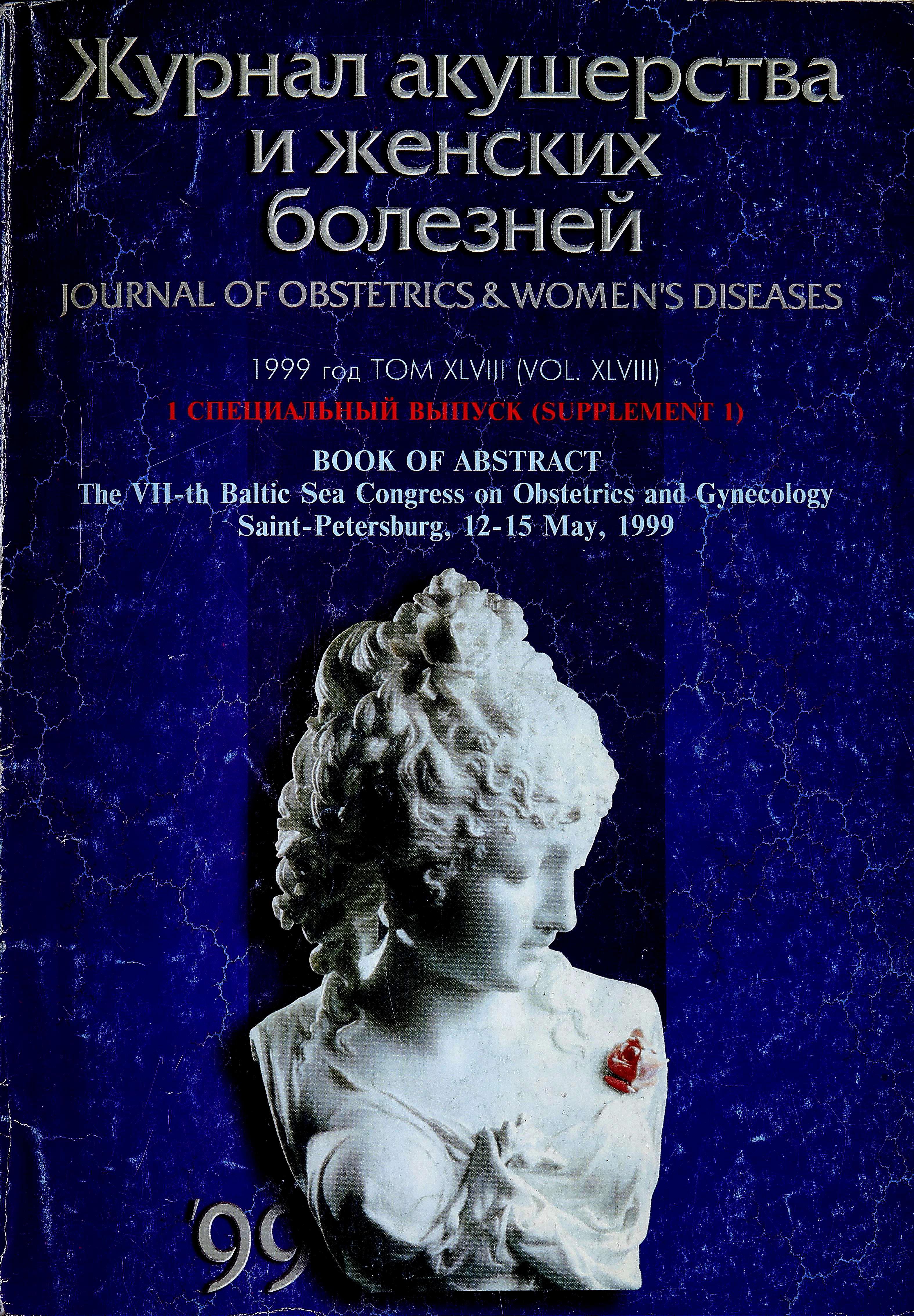Thyroid gland function at the pregnant woman with diabetes mellitus
- Authors: Laricheva I.P.1, Budikina T.S.1, Burumkulova F.F.1, Petrukhin V.A.1, Gurieva V.M.1
-
Affiliations:
- Moscow Regional Institute of Obstetrics and Gynecology
- Issue: Vol 48, No 5S (1999)
- Pages: 96-96
- Section: Articles
- Submitted: 17.02.2022
- Accepted: 17.02.2022
- Published: 15.12.1999
- URL: https://journals.eco-vector.com/jowd/article/view/101046
- DOI: https://doi.org/10.17816/JOWD101046
- ID: 101046
Cite item
Full Text
Abstract
High prevalence (15%) of polyglandular disturbances in patients with diabetes mellitus (DM) were by the basis for analysis of a thyroid gland (TG) function at the diabetic pregnant woman.
Objective: 334 women with insulin-dependent DM (IDDM), 35 women with non-insulin-dependent DM and 56 women with gestational diabetes (GD) were enrolled in the study. The control group consisted of 250 pregnant women without an endocrine pathology and high-gravity complications of pregnancy.
Full Text
High prevalence (15%) of polyglandular disturbances in patients with diabetes mellitus (DM) were by the basis for analysis of a thyroid gland (TG) function at the diabetic pregnant woman.
Objective: 334 women with insulin-dependent DM (IDDM), 35 women with non-insulin-dependent DM and 56 women with gestational diabetes (GD) were enrolled in the study. The control group consisted of 250 pregnant women without an endocrine pathology and high-gravity complications of pregnancy.
Methods: Serum free and total thyroxine (T4) and triiodothyronine (T3) and thyrotropin-releasing hormone (TSH) levels were measured by automated immunometric assay in terms with 12 for 40 weeks of pregnancy.
Results: We observed the different diseases of TG in 57 pregnant women (13,1%) and most frequently it was the diffuse nontoxic goiter (63,3%). In 16 cases (28%) we have found the chronic autoimmune thyroiditis, and 5 women (8,7%) had a hypothyroidism and received thyroid hormone replacing therapy. The research of TG hormonal function has demonstrated that the serum TSH levels for the pregnant women with different types of DM tends to increase from second trimester, and this rise was most expressed for the women with IDDM. Patients with DM had the significant decrease of total levels of T3 and T4 during of third trimester of pregnancy compared with control group (p<0,05). The decrease of T4 total levels was more expressed for the women with IDDM compared with other types of DM (p<0,05).
Conclusions: Thus, our results confirm the high incidence of TG pathology among the pregnant woman with DM. The functional hormonal changes during the pregnancy (relative hypothyroxinemia) were most expressed for the women with IDDM, that can be partly connected to metabolic carbohydrate disturbance in this group of patients.
About the authors
I. P. Laricheva
Moscow Regional Institute of Obstetrics and Gynecology
Author for correspondence.
Email: info@eco-vector.com
Russian Federation, Moscow
T. S. Budikina
Moscow Regional Institute of Obstetrics and Gynecology
Email: info@eco-vector.com
Russian Federation, Moscow
F. F. Burumkulova
Moscow Regional Institute of Obstetrics and Gynecology
Email: info@eco-vector.com
Russian Federation, Moscow
V. A. Petrukhin
Moscow Regional Institute of Obstetrics and Gynecology
Email: info@eco-vector.com
Russian Federation, Moscow
V. M. Gurieva
Moscow Regional Institute of Obstetrics and Gynecology
Email: info@eco-vector.com
Russian Federation, Moscow
References
Supplementary files







